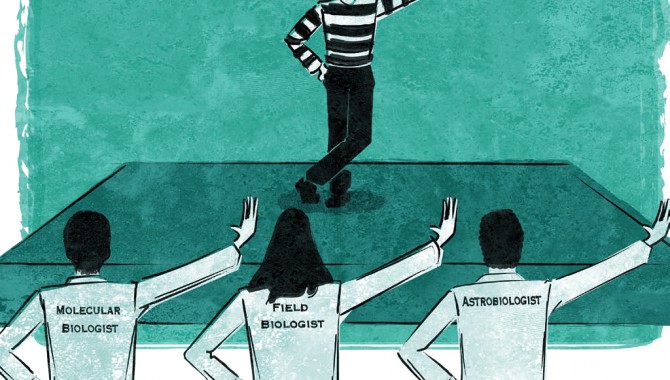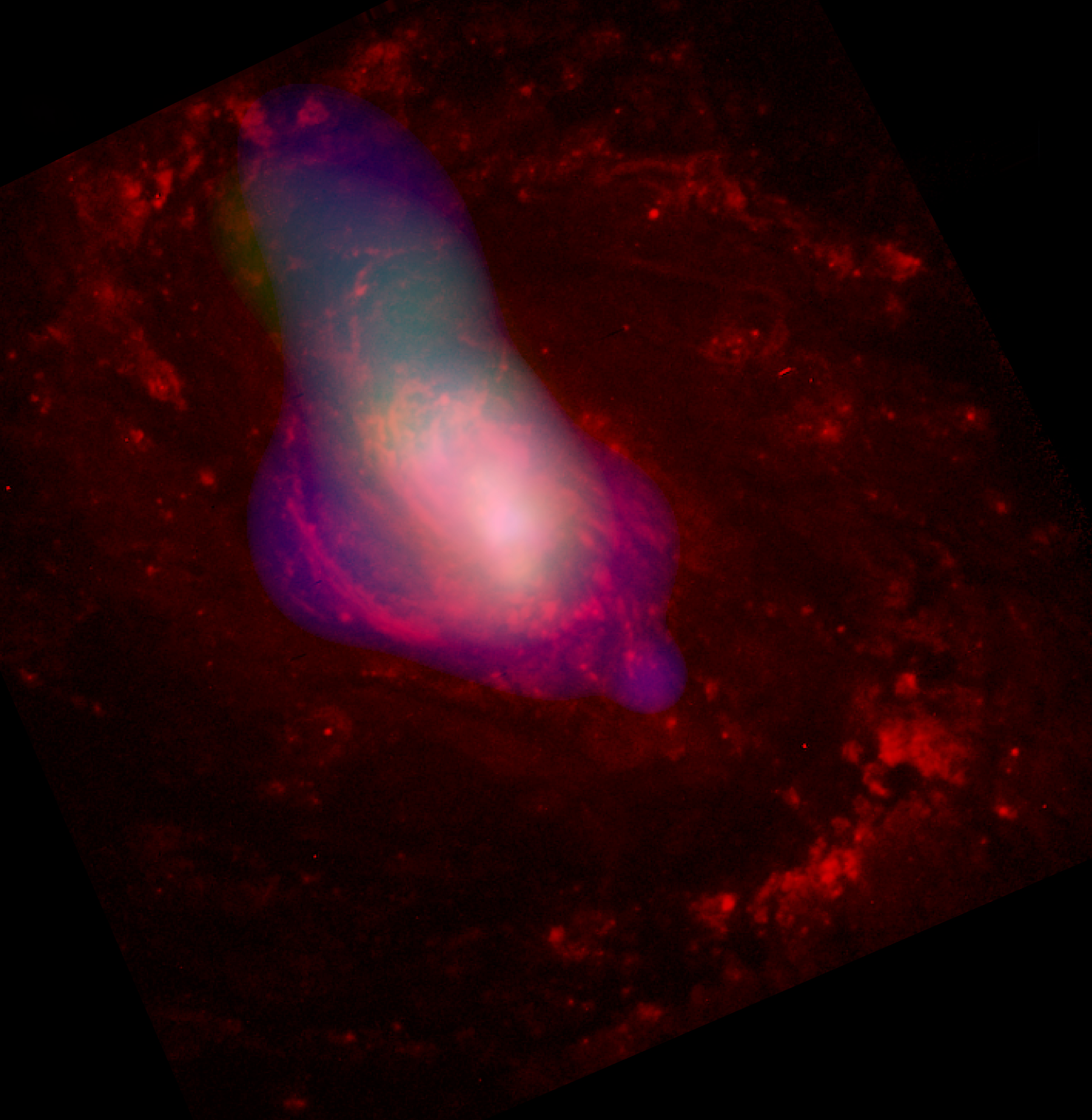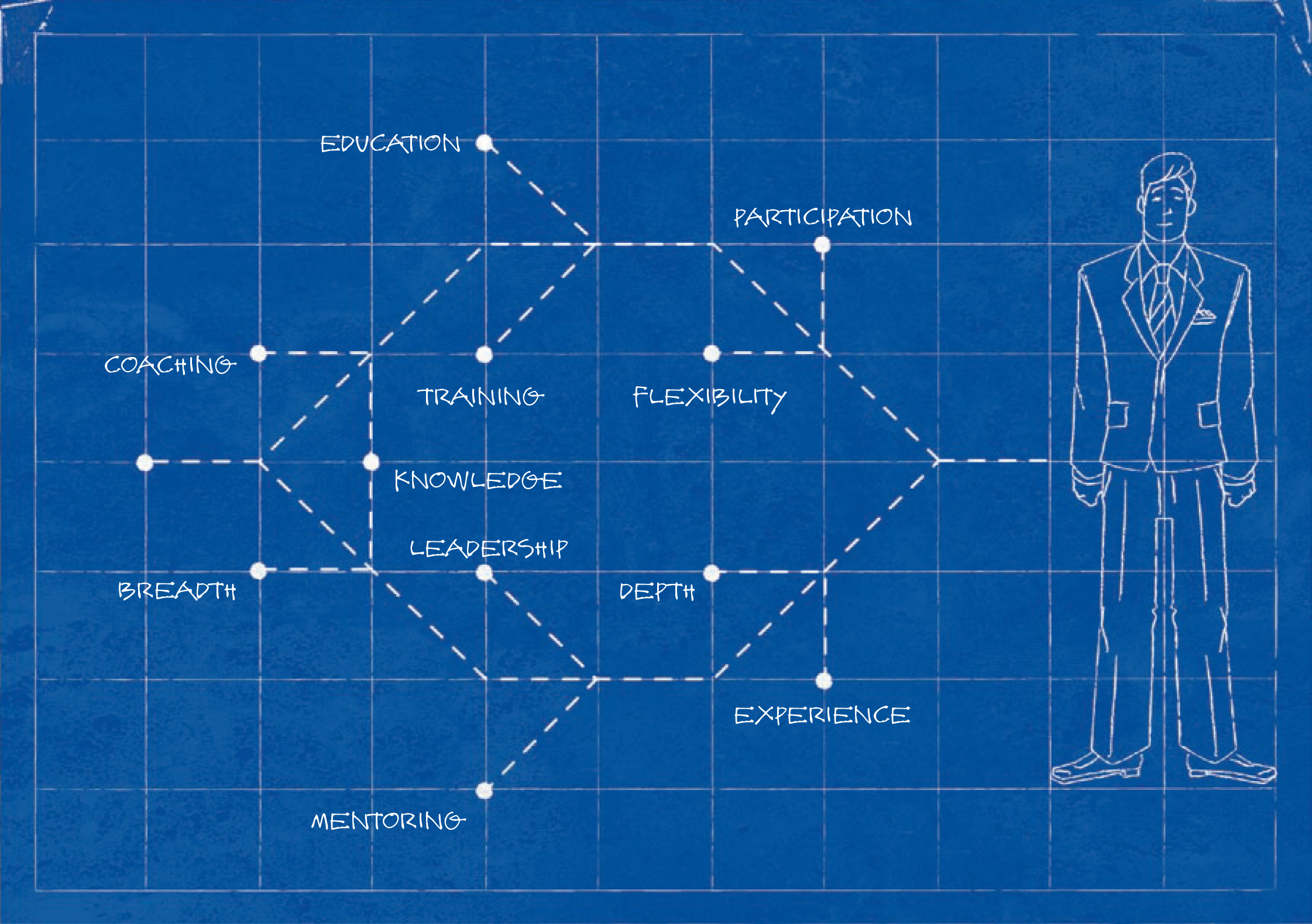
By Dr. Richard E. Shope III
The enterprise of scientific inquiry is an adventure of going where curiosity beckons. Scientists generate questions, propose explanations, carry out investigations, and communicate their findings. Communication within a scientific discipline has its own challenges, but cross-discipline communication is especially rich in difficulties and pitfalls.
Each scientific discipline has its own language, history, and methodologies, and tends to view the rest of the science world through its own set of experiences. A field biologist values the surrounding context of an ecological niche where a molecular biologist finds the heart of the matter in the laboratory tracing DNA sequences. When an astrobiology mission brings both those scientists together on the same team, they may find it very difficult to communicate to one another without a deliberate effort to understand and empathize with each other’s perspective. A large and diverse space science team working on a major solar system exploration mission compounds the challenge. Several fields come together and must agree on a common set of goals, objectives, and strategies for data gathering. This requires the art of diplomacy, maneuvering through minefields of potential errors, biases, and disagreements based on the diversity of the science cultural views. Each investigator’s drive for mission success generally motivates them to work toward common ground where their specializations can meet, but it can be rough going.
As a science research analyst working for the Office of Science Research and Analysis at the Jet Propulsion Laboratory (JPL), my job is to communicate effectively across the gulf separating scientific specialties. I report highlights of recent JPL space science research results to discipline program scientists and managers in decision- making positions at NASA Headquarters. Through this process of what I call space science “upreach,” I provide one of many streams of information that help NASA’s Science Mission Directorate remain aware of the leading-edge developments in solar system research occurring at JPL under their auspices. My communications must quickly frame the big picture, get to the point, highlight the significance, quietly mention a recommendation or two, and then exit as gracefully as a silent mime, having ignited a spark of interest that flashes through the NASA hallways.
What qualifies me for this job? Two things, really: my lifelong interest in science and my mastery of the art of mime.
I grew up in a family of renowned virologists. As a child, I sloshed through central New Jersey fields and woods with my grandfather (Richard E. Shope) and galumphed through barnyards with my father (R. E. Shope, Jr.) as they went virus hunting. For me, it was a grand time of swatting mosquitoes and filling my quota of laughter and wonder, enjoying the company of my actively curious namesakes. I would ride with my grandfather to his laboratory at the Rockefeller Institute in New York City and look out the window at the East River or marvel at his honorary degrees while he fiddled with his centrifuges. On different occasions I would visit my father’s virology lab at the University of Minnesota Veterinary College in St. Paul as he checked the results of his viral cultures in Petri dishes and made the rounds to check on the experimental animals.
So I grew up speaking “science” as a first language. Early on, I learned that science is less aboutknowing than about questioning. Question everything, including authority and tradition, but most especially question one’s own first impressions and pet ideas. No knowledge is to be considered absolute. Looking at a situation with new information or from a different point of view might change what is actually known. So the scientist must remain open to divergent possibilities and points of view. At interdisciplinary gatherings of science colleagues at JPL, I learn most from listening to the questions scientists ask each other. Often they are the same questions that form in my own mind — fundamental questions that aim at understanding how esoteric details relate to the big picture.
My earliest claim to fame is as a mime artist who studied with Marcel Marceau and other great mimes in Europe and Japan. That experience and expertise also contributes to my effectiveness as a science communicator. I mastered the art as a performer, but I also apply its underlying principles to the field of science education. Those principles are epitomized in the Greek concept of mimesis, the representation of reality in art. Participatory mime accompanied by narrative explanation — movement and words together — guides participants to construct vivid conceptual understandings of dynamic processes. What is normally an interior thinking process — analyzing and then synthesizing or constructing a map or model of a dynamic system — occurs out in the open as a mime improvisational event.
For groups of visitors at JPL, I often create a participatory mime of the Mars Exploration Rovers, treating each component as a live character. I invite volunteers in the audience — most often a mix of parents, teachers, and children of all ages — to act out the science story. Using my mime skills and informed by reliable data, I guide them through gestures and explanations toward an understanding of the science concepts. One group acts out the robotic arm, working in synchrony to deploy its science instruments. Each instrument — the Rock Abrasion Tool, the Microscopic Imager, the Alpha Particle X-ray Spectrometer, the Mössbauer Spectrometer — is played as a separate heroic character. Each “character” creates mime moves that aim to communicate how the instrument works, what it measures, and how it relates to the underlying science concepts. The result is that all those present have a shared experience of mimesis in action: either as direct participants (by acting it out) or as participant observers (by actively watching). This mimediate inquiry event — that is, this tangible representation of reality (mimesis) mediated (as externalized constructions of thought) by meaningful mime and narration — can be referred to, talked about, replicated, and modified by an infusion of new information.
The thinking processes of the artist and the scientist are analogous — both apply their skill and knowledge to complex data to construct a representation of reality that can be tested and validated. For the mime artist, the test is whether the mime performance communicates meaningfully and increases understanding for an audience. For the space scientist, the test is whether the dynamic model continues to correspond to the real-world phenomena it seeks to explain. And scientists, too, often employ a kind of mimesis to make their ideas visible — or tangible — to their colleagues, using a combination of written, spoken, and visual presentations at their gatherings. As Glenn Orton describes the spinning bands of atmosphere near the poles of Saturn, there is a hint of a dancer’s pirouette in his body language. Kevin Baines speaks so kaleidoscopically fast that in the space of two or three minutes, your mind has visualized quick updates of the deep storms of Saturn and high-flying ammonia clouds in Jupiter’s upper atmosphere. This is where the discourse of science gets highly animated, as differing interpretations of results are argued about and worked through toward eventual consensus about the viability of a proposed explanation. This is also where it becomes apparent that science communication is a complex process even among scientists. Speaking across disciplines is an act of intercultural communication. And this is where my own mix of expert studies of science, intercultural communication, and mime come into play.
For example, from 1989 to 1994, Magellan’s science instruments beamed radar waves through the thick layers of sulfur dioxide clouds to map nearly every nook and cranny on the surface of Venus. In 2002, as Dr. Sue Smrekar and her team at JPL pored over the Magellan data, they noticed patterns formed by surface features that resembled polygon-shaped formations on Earth. But these Venusian polygons were on a vastly larger scale. She and her team developed a computer algorithm that could scour the surface of Venus for candidate areas where giant polygons exist. As the computer scouted out the terrain, Dr. Smrekar had to shape the data into mental pictures that would help her recognize key patterns. It was as if she and her science team were physically there, on Venus, climbing atop the basalt plateaus, looking closely at the forms to unlock their mysteries and unravel millions of years of Venusian history.
Enter the science research analyst/mime artist. Through the use of mimediate inquiry processes I climb into the science story to gain my own understanding. In this case, I incorporate the dynamical model proposed by Smrekar to inform participatory mime performances, figuratively climbing atop the basalt plateaus and re-experiencing the formation of the Venusian polygons. If my mimediatepicture is accurate, which I check by conversing further with the scientist, then I am confident that I have the understanding I need to create the space science highlight. In this roundabout way, my mime expertise supports my work in the highly specialized world of space science upreach as I communicate significant results to science decision makers.
One of the deepest human yearnings is to feel that one’s work is significant. A space scientist’s involvement in a massive enterprise like the space program can arouse a feeling of existentialinsignificance. The scale of the extragalactic abyss inspires trembling and trepidation. In a different way, so does realizing that you have stepped into an uncharted region of specialized knowledge and your professional reputation hangs on the improbable success of a chunk of aluminum carrying a highly sophisticated science instrument hurtling through interplanetary space for several breath-suspended years to capture miniscule and esoteric measurements, which will be beamed back through space to Earth, streaming into your laptop to be interpreted by your own agile mind. Then you turn that thrill of discovery into a paper that goes through months of peer review in order to be published for the specialist science community, which views the paper as one tiny brush mark on a lavish canvas. And you face the nagging question, have I glimpsed reality or have I been fooled by its shadow? The verdict may dangle unresolved for years in the ensuing discussion among colleagues. Such is the ongoing angst of the space scientist. My work, communicating the import of scientists? results to decision makers and scientists outside their discipline, is one critical piece of this shared enterprise of space exploration and inquiry.
About the Author
 |
Dr. Richard E. Shope, III is a science research analyst working for the Office of Science Research and Analysis at the Jet Propulsion Laboratory |







